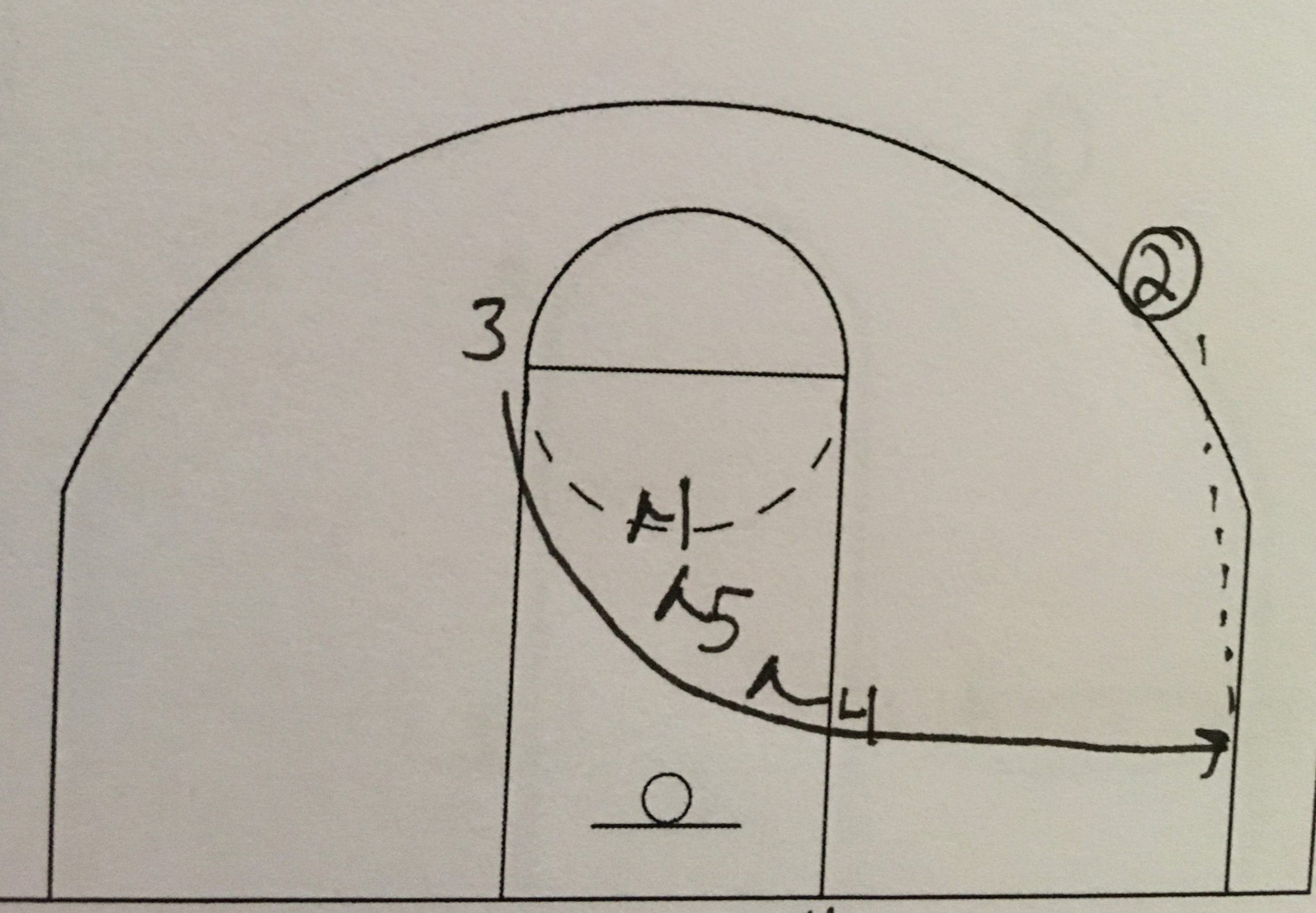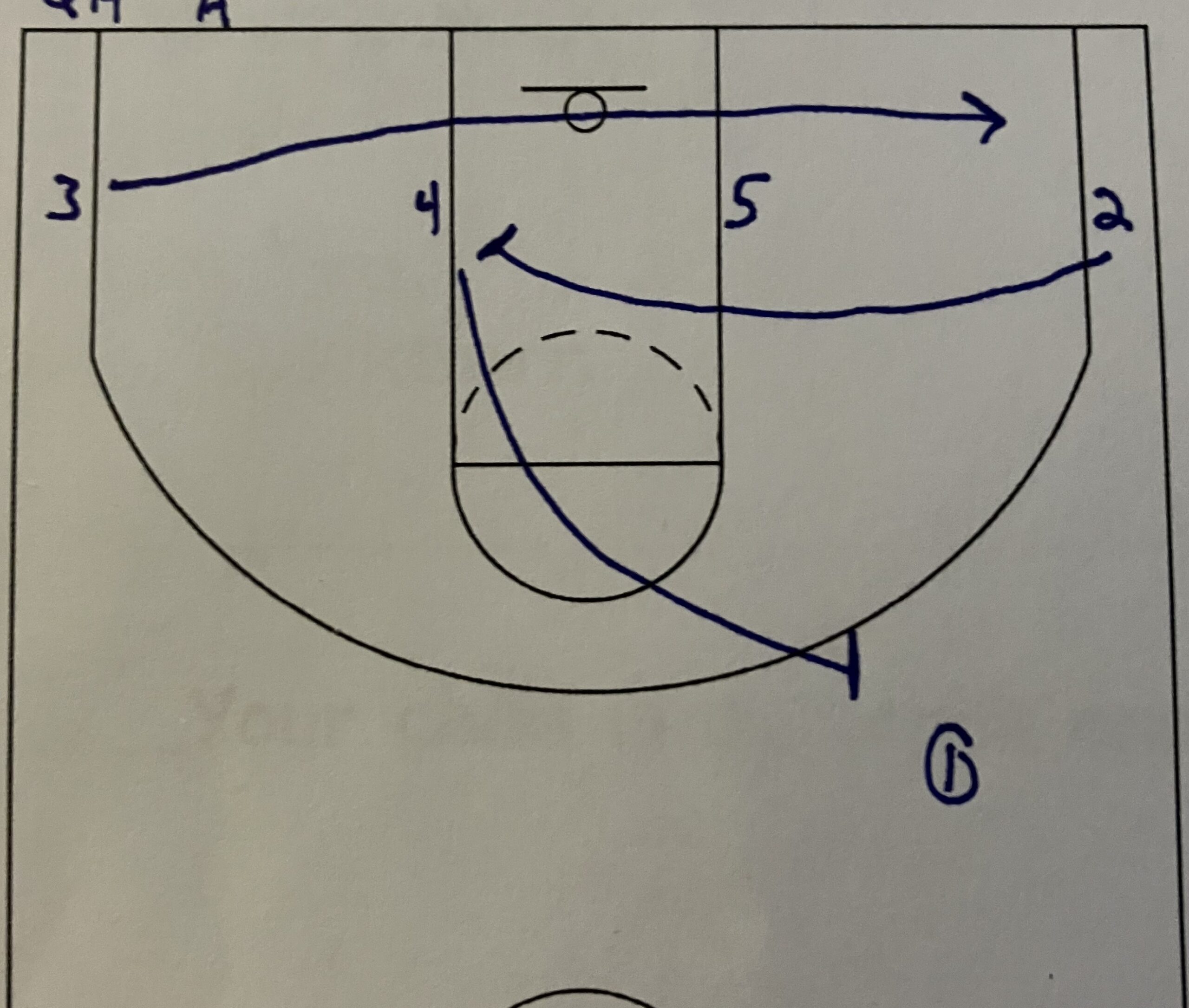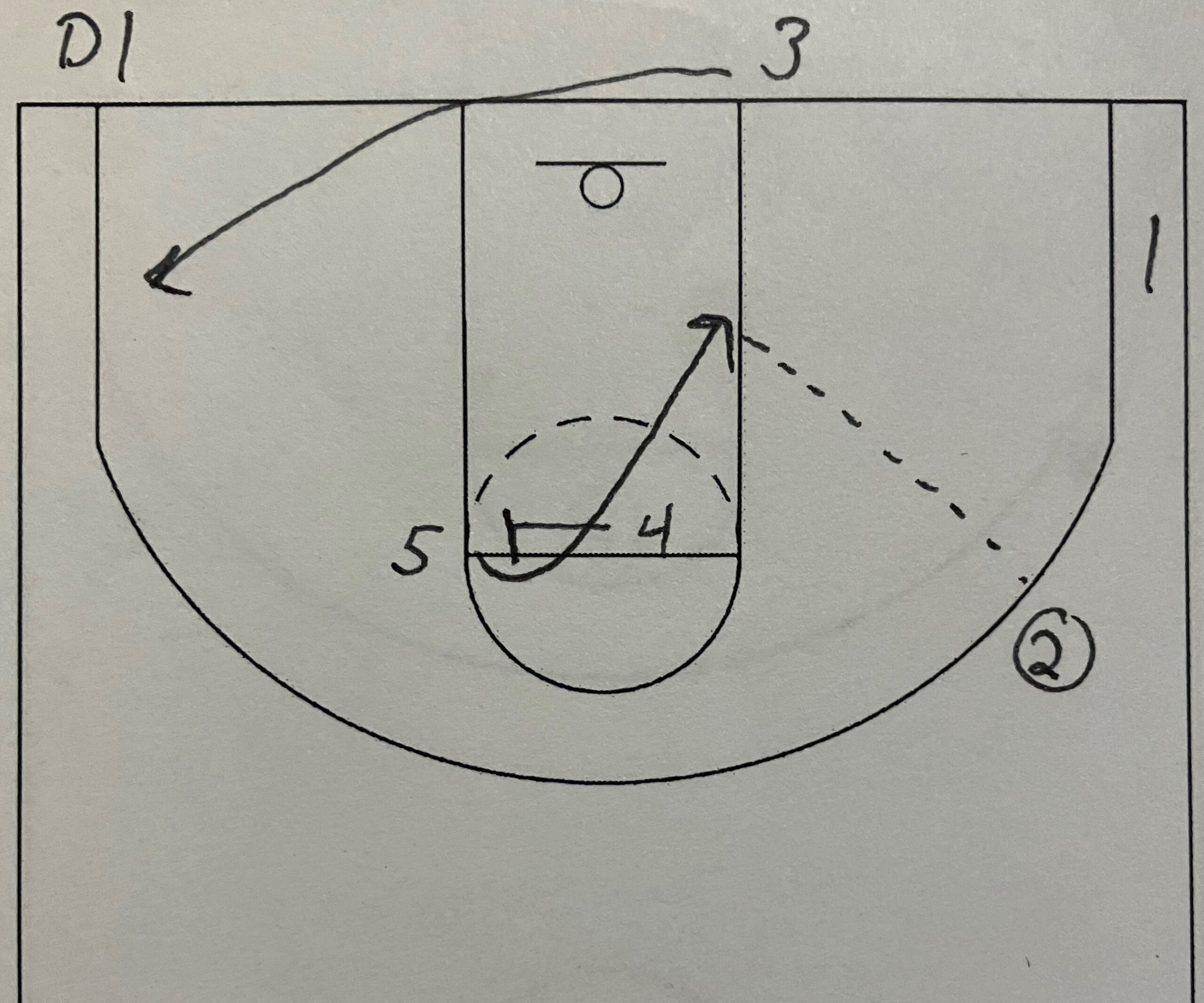A good way to help a post player get open is to set a small to big post screen. A guard screening for a post player prevents a defense from just being able to switch the screen. It forces the post defender to get around the screen quickly to stay in good guarding position.
The key for the offense is having the guard set a physical enough screen to hold the post defender long enough for the post player to get open, catch, turn and shoot the ball. The guard setting the screen must set a good screen and not just move past the defender without making contact.
As a coach, you must explain and show that a good screen can have the benefit of actually getting the guard open because their defender has to help more on the screen. This leaves the defender a step or two behind the guard in recovering. That step or two can give the guard the opening they need to get open for a shot.
This play keeps the ball in the point guard’s hands letting them make the decision on when to make the pass. The point guard is normally a good decision maker. If nothing else the ball stays in the point guard’s hands which should prevent a turnover.
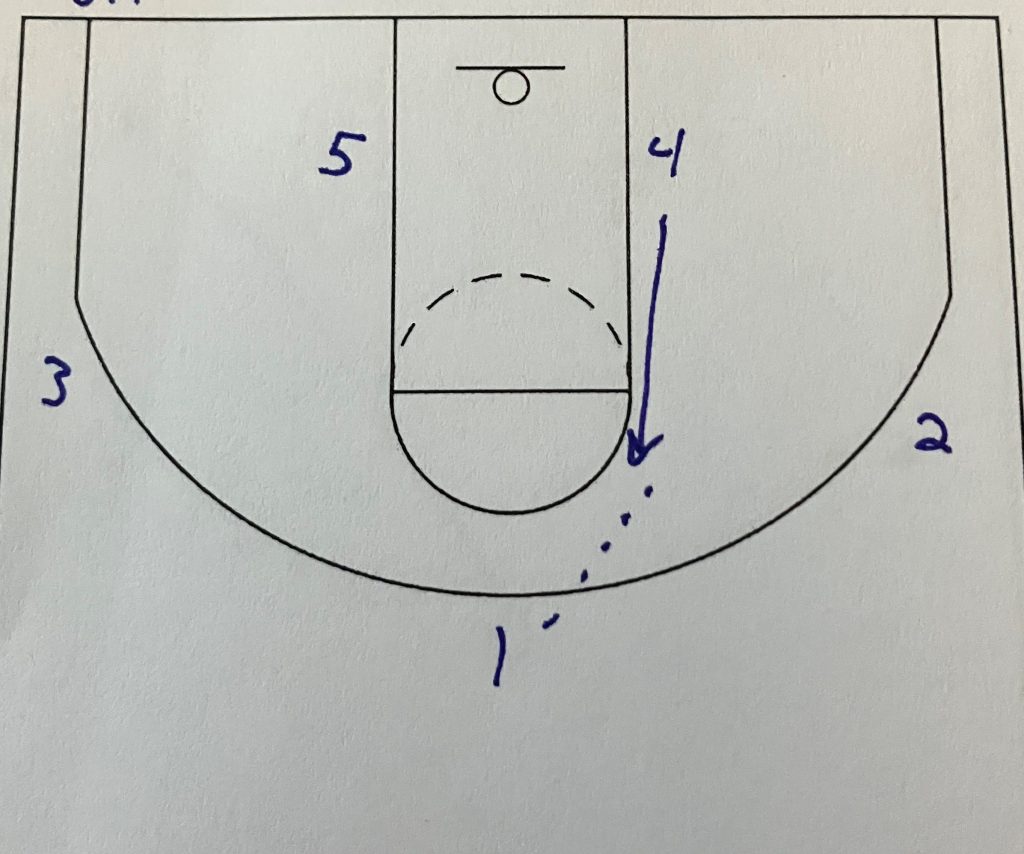
This play starts in a 3-out 2-in set. The post player not being isolated is going to flash up the lane line for the initial entry pass. This play can be ran to either side. The post player being isolated will stay on the block while the other post player will flash up the lane. If the big(4) is being isolated then everything will switch sides in the diagrams.
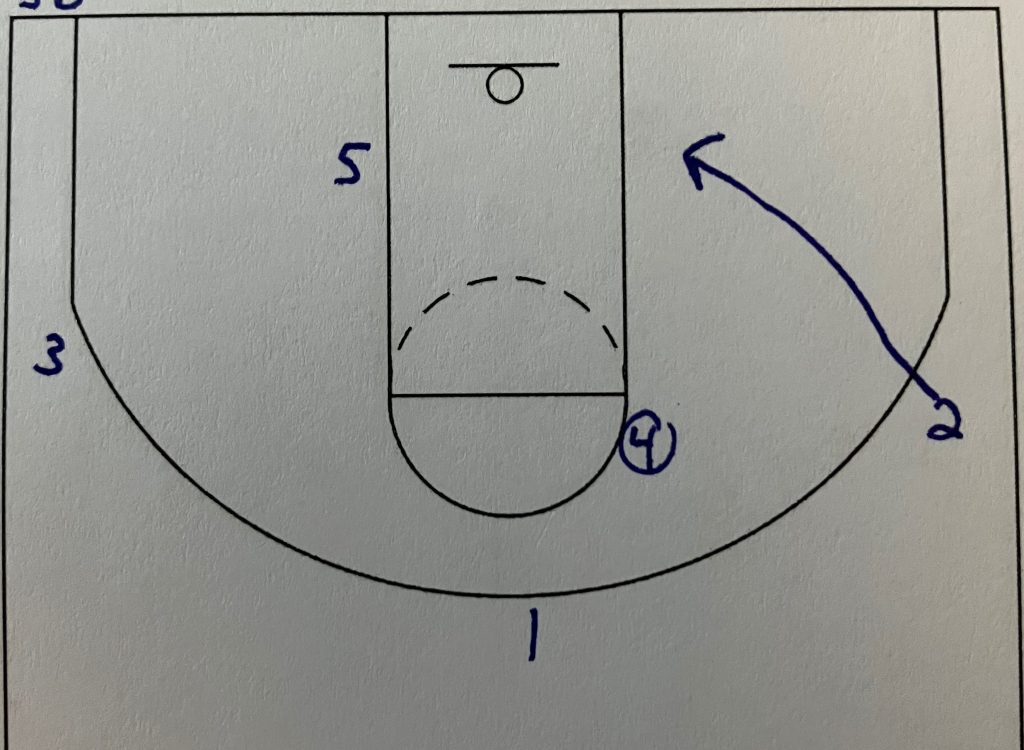
The first option is a backdoor cut by the wing on the post catch. In the diagram this the guard(2) cutting hard to the block looking for the backdoor pass by the big(4).
This is a scoring chance but it gets the guard(2) in position for the small to big screen. The wing setting the screen must set a good screen. If the forward(3) is a better screener, then as a coach you want to put them opposite the post player who is being isolated. If both wings can set good screens, then there is no reason to switch the wings.
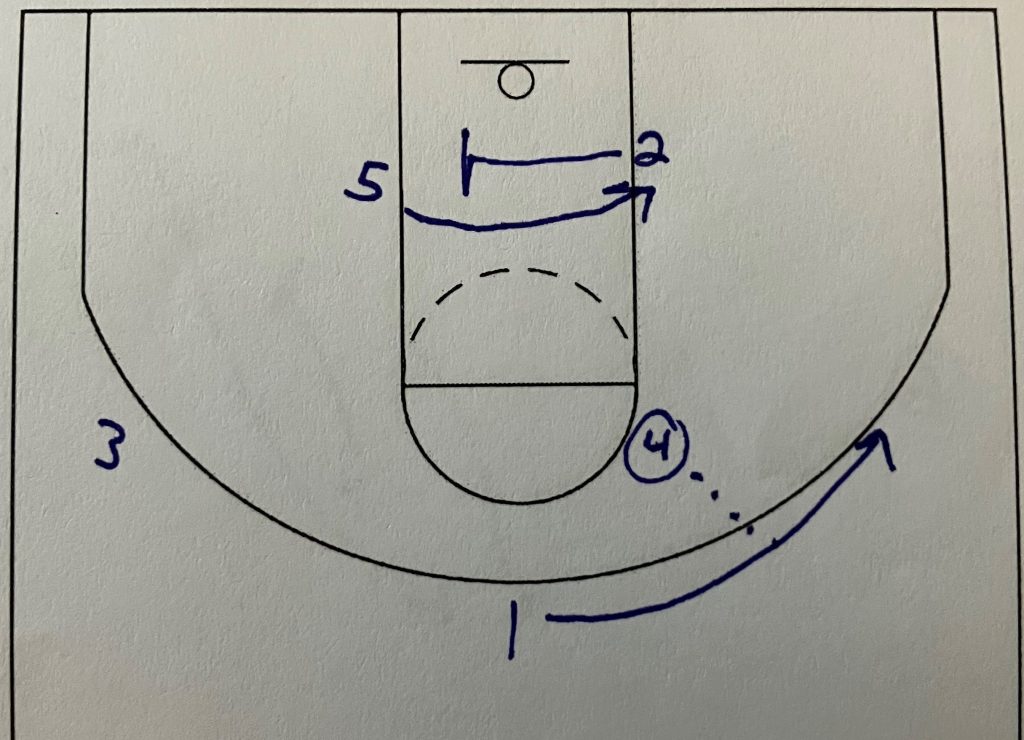
After the backdoor cut the point(1) is running an over cut for a handoff or touch pass to get the ball back from the big(4). This also gets the ball on the wing so the post entry pass has a good angle. The point(1) can not leave to soon on their over cut. They have to let the backdoor cut happen before running the over cut.
The point(1) needs to time their cut so they are getting the ball back from the big(4) before the screen is being set. The ball needs to be on the wing and the point(1) needs to be ready to make the pass before the screen is set.
As the point(1) runs the over cut, the guard(2) is continuing their cut across the lane to set the small to big screen for the center(5). This play needs to be practiced before running in order to get the timing of the handoff in relation to the screen.
This is not a play I would draw up in a huddle during a game. The timing is key for the play to work. If the timing is off then the center(5) could be open coming across before the point(1) has the ball back from the big(4).
When the timing is right, the point(1) will get the ball and be able to take a dribble or two before the center(5) is moving across the lane. The center(5) needs to be patient on using the screen. The center(5) must wait for the ball to get to the wing before moving across the lane. If the center(5) leaves too early, then their defender has too much time to get around the screen and get back into good guarding position.
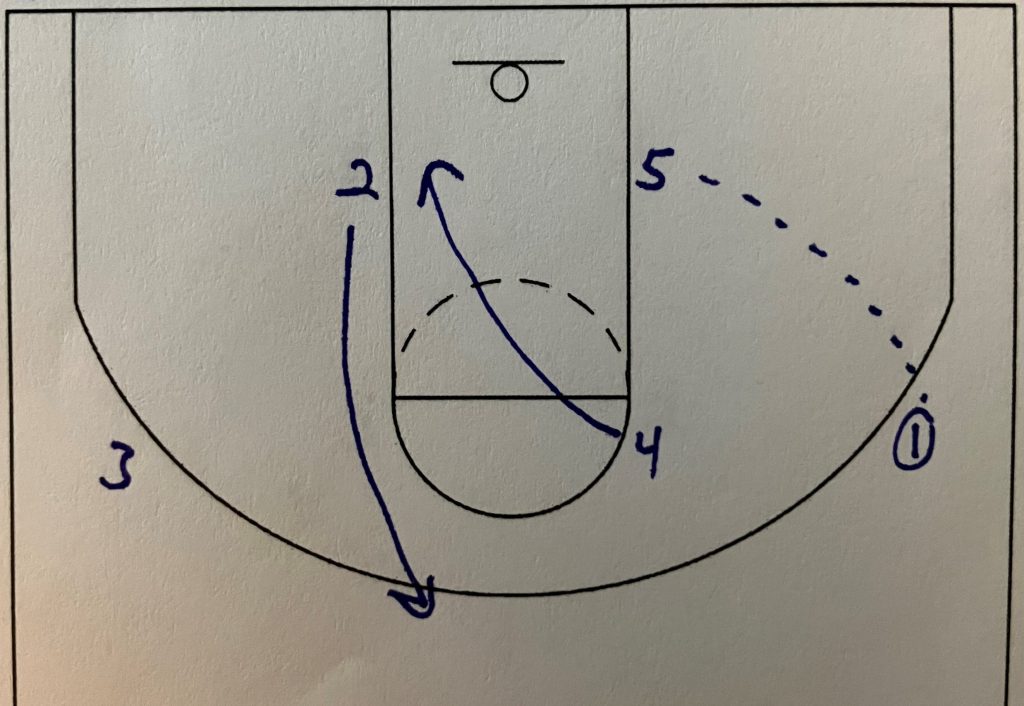
Once the ball is entered into the post, the big(4) and guard(2) are interchanging. These two cuts help to take away the helpside defense giving the center(5) extra time to make a move and score. It also gives the center(5) an easy read on who to pass the ball to if they get doubled. Whichever defender helps and doubles, the center(5) is passing either to the block or the top of the key.
These two cuts simplify the decision making process for the center(5). If no double happens then the center(5) makes a move and scores. If the center(5) gets doubled, then they pass the ball to their teammate whose defender has come to double them.
The one extra counter I add to the play is if the point(1) does not pass the ball to the center(5), then the big(4) will set a down screen for the guard(2) rather than making a straight cut to the block. If the point(1) does not pass the ball into the post, then the guard(2)’s defender has usually stayed on the center(5) helping with the small to big screen. The big(4) now screens this defender which leaves the guard(2) wide open at the top of the key.
This counter is a read by the big(4). They are able to see the screen and potential pass from the high post. If they see a post entry pass, then they cut straight to the block. If they do not see the entry pass, then they are setting a screen for the guard(2).
The guard(2) is setting a screen for the center(5) and then running to the top of the key no matter whether there is a post entry pass or not. So, the entry pass not occurring is only going to change what the big(4) is doing and nobody else. This keeps the play simple for everybody else.
Plays need to be complex enough to get players open but simple enough for the offense to be able to execute them at a high level. The less reads players have to make, the better the plays will be executed at the high school level and below. Most high school players are not good enough to make good reads. Simple reads are better when only one or two players are involved. This is why the only change on a read in the play is the big(4) reading the entry pass or not. Everybody else is doing the same thing no matter what else happens.


